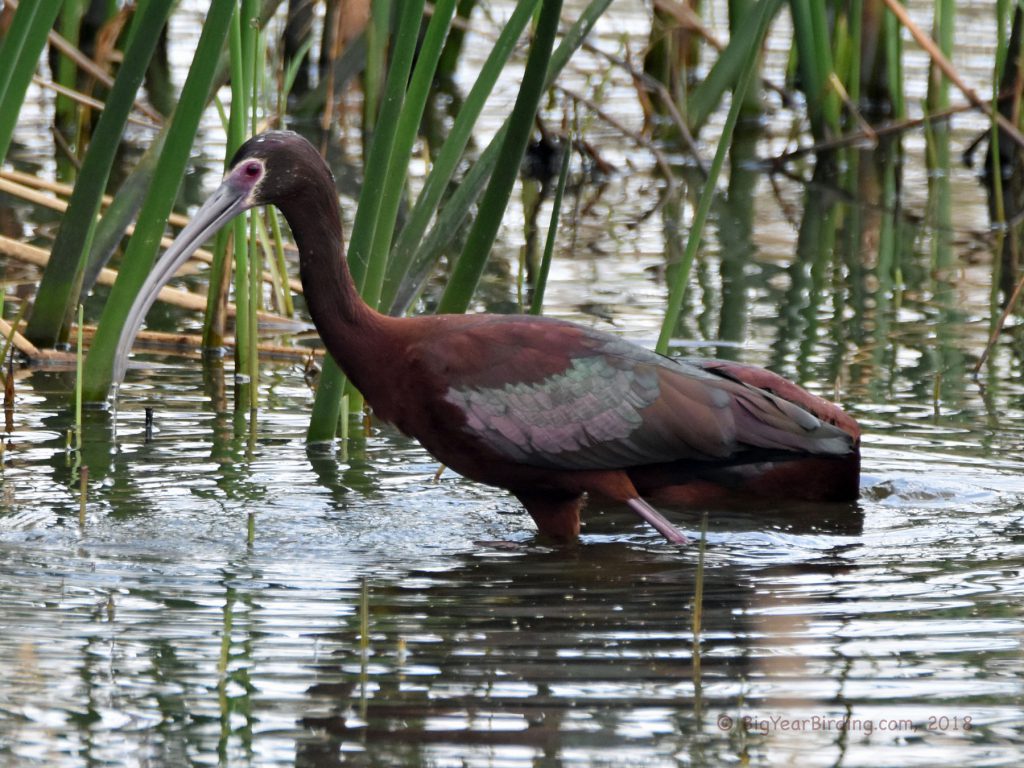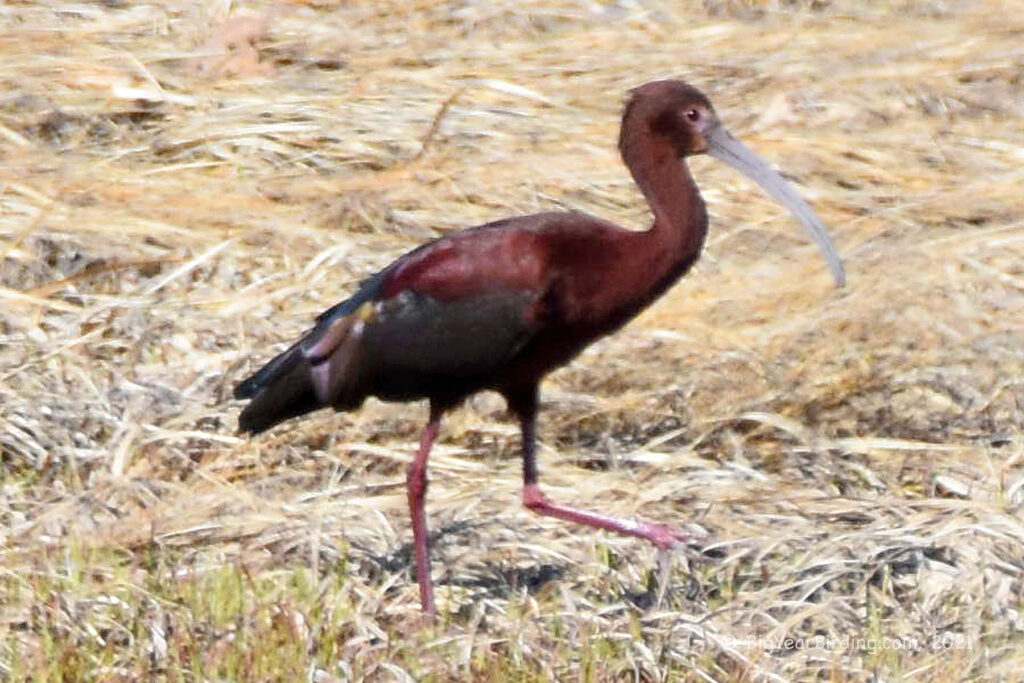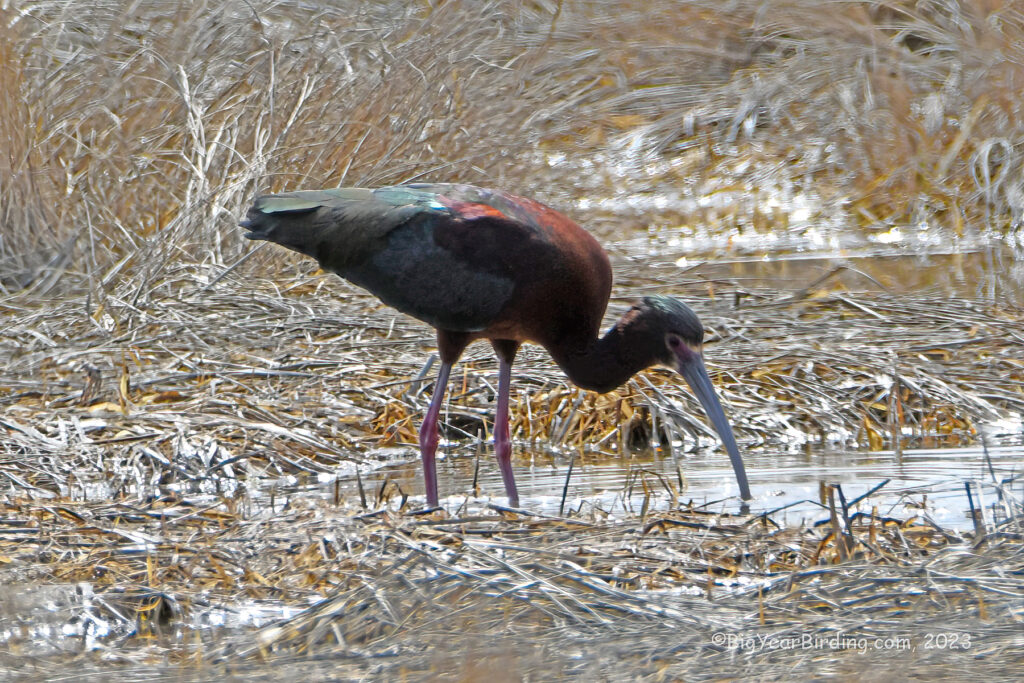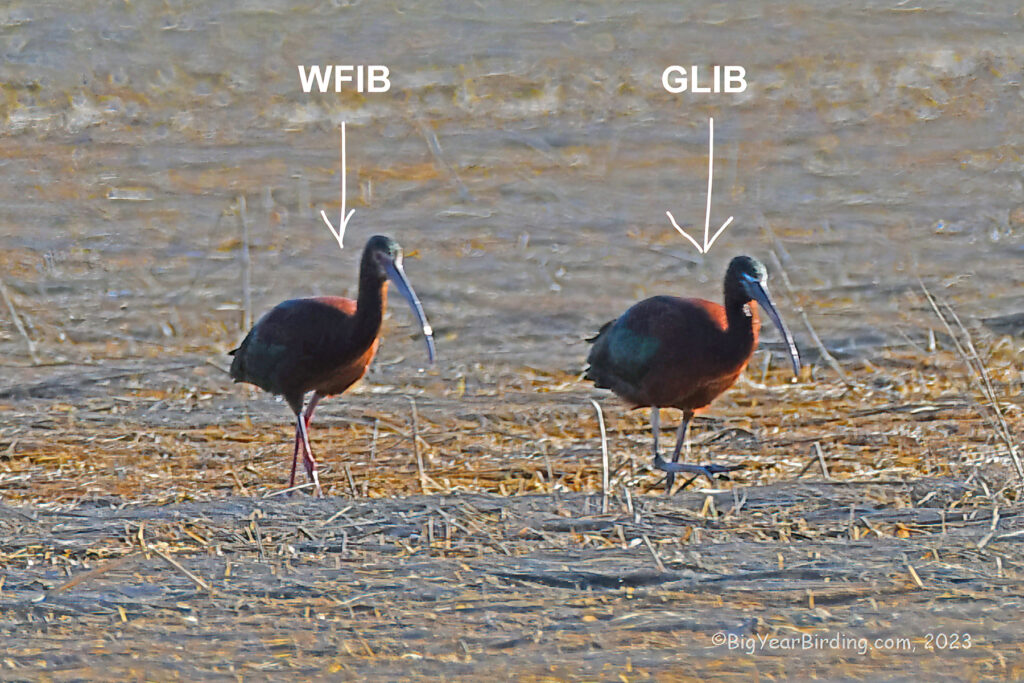
The White-faced Ibis is a medium-sized wading bird that belongs to the ibis family Threskiornithidae. These birds have distinctive physical features that make them easily identifiable. They are about 24-27 inches long, have a wingspan of 38-41 inches, and weigh around 1.4-1.9 pounds. The male and female White-faced Ibis look similar, with glossy, iridescent feathers that appear maroon or greenish in color, depending on the light. The head and neck of the White-faced Ibis are featherless and have a bluish-white color, which distinguishes them from other ibis species.

The White-faced Ibis has a wide range, spanning across the western and southwestern regions of the United States, Mexico, and South America. These birds can be found in freshwater and saline wetlands, flooded fields, and along rivers and streams. During the breeding season, they can be found in dense colonies, with nests built on low bushes, trees, or on the ground. After breeding, they migrate to other regions for winter. White-faced Ibis migrate mainly at night and may fly long distances, with some birds traveling up to 1500 miles.
In addition to their physical characteristics, White-faced Ibises have unique foraging behaviors. They use their long, curved bills to probe into the muddy water or soil to find prey, which includes insects, crustaceans, and small fish. They often forage in flocks, either alone or with other wading bird species. These birds are also known to follow plows and tractors, looking for insects and other small creatures that are exposed by the disturbance.
Despite their wide distribution, the White-faced Ibis population has declined in recent years due to habitat loss and degradation. Wetland conservation efforts and habitat restoration projects are crucial in protecting the species and ensuring their survival. By conserving their habitat and food sources, we can help ensure that the White-faced Ibis and other wading bird species continue to thrive for generations to come.

In conclusion, the White-faced Ibis is a unique and fascinating bird that is easily identifiable by its physical characteristics and foraging behaviors. These birds can be found in a wide range of habitats, from freshwater wetlands to saline marshes. They have a distinct migration pattern and play an essential role in their ecosystem as a predator and prey species. However, like many other bird species, the White-faced Ibis is facing threats from habitat loss and degradation. By protecting their habitat and food sources, we can help ensure that these birds continue to thrive in the future.

